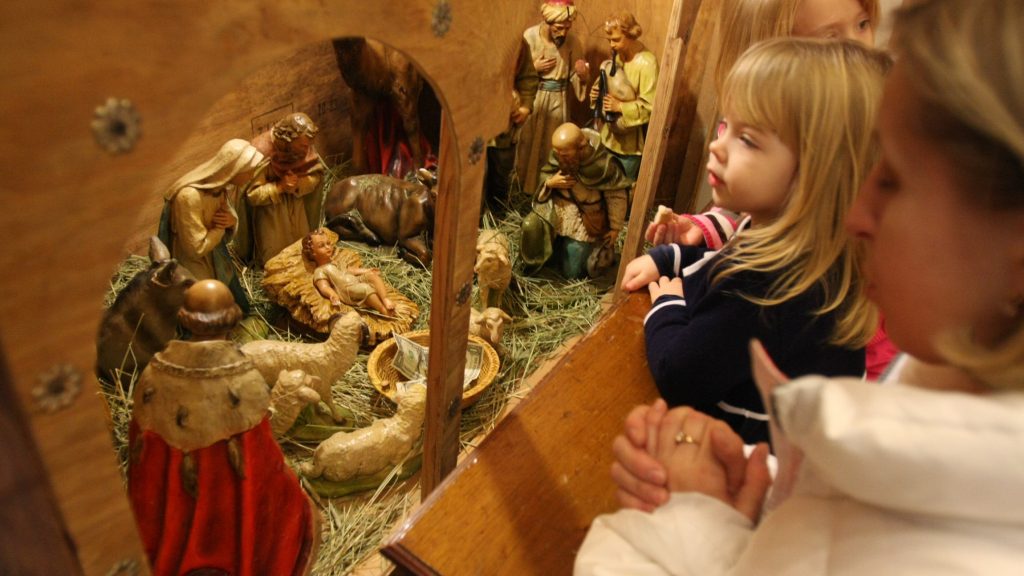What is the meaning of Christmas? That question may not be quite as simple as it sounds.
For many people, Christmas means big, jovial meals with family and friends, singing seasonal hymns in church, exchanging gifts. And for some generous souls, it also means serving meals to the poor or visiting lonely people in hospitals or nursing homes.
Those are all good answers, I think — all those things really are a welcome part of Christmas. But for a deeper take on the matter, let’s turn to two towering religious thinkers and masters of rhetoric, St. Augustine and St. John Henry Newman.
For both of them, the coming of Jesus is directly linked to the doctrine of original sin — that “terrible aboriginal calamity,” St. Newman calls it, which brought about humanity’s state of alienation from God and continues to serve as breeding ground of personal sins. The incarnation, which we celebrate at Christmas, is God’s chosen means of undoing this terrible damage through the redemptive, grace-giving life of Jesus Christ.
Against this background, St. Augustine in his Christmas homilies enjoys marshaling paradoxes to illustrate “the humility of God.” He therefore speaks of the newborn Savior as “unspeakably wise, wisely speechless as an infant; filling the world, lying in a manger; so great in the form of God, so small in the form of a servant, in such a way that neither the greatness was diminished by the smallness, nor the smallness overwhelmed by the greatness.”
And to what end? Here is St. Augustine’s answer: “Unless he had a human birth, we would never attain to the divine rebirth; he was born that we might be reborn. … His mother bore him in her womb; let us bear him in our hearts. The virgin was big with the incarnation of Christ; let our bosoms grow big with the faith of Christ. She gave birth to the Savior; let us give birth to praise. We mustn’t be barren; our souls must be fruitful with God.”
Writing 14 centuries later, St. Newman offers much the same account of Christmas in his own inimitable fashion. After the fall, he points out, the Second Person of the Trinity “might have remained in the glory which he had with the Father before the world was. But that unsearchable Love, which showed itself in our original creation, rested not content with a frustrated work, but brought him down again from His Father’s bosom to do his will and repair the evil which sin had caused.”
The first Christmas wasn’t the end, though, but the beginning, inasmuch as it remains for us to complete the work of redemption in ourselves. Here’s St. Newman again: “The first grace is faith, the last is love; first comes zeal, afterwards comes loving-kindness; first comes humiliation, then comes peace; first comes diligence, then comes resignation. May we learn to mature all graces in us — fearing and trembling, watching and repenting because Christ is coming; joyful, thankful and careless of the future because he is come.”
So Christmas most certainly does mean big, happy family dinners, familiar carols and hymns, and gift-giving, along with acts of kindness performed for the needy and the sad. Pile on the Christmas trees, the holiday wreaths, the familiar music, and enjoy every blessed bit of it. But in the midst of it all, let’s keep the eyes of our hearts fixed on that tiny figure in the manger. In the end, nothing we do would count for very much if he hadn’t come to celebrate that first Christmas with us.

